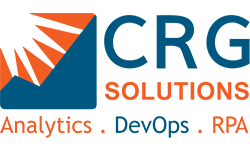To ace data analytics and business intelligence and to stay ahead of the curve, one must have a keen eye observation on emerging market trends and also be able to predict the future. This will give a better understanding about the data and trends affecting analytics and business intelligence platforms. Here are some of the data analytics and business intelligence trends to watch out for:
- Artificial Intelligence with analytics: Artificial intelligence with business intelligence is aiming at making machines execute most of the human work that are complex. Artificial intelligence and machine learning are rapidly affecting the way we interact with data analytics and also in the management of data. Generative AI has revolutionized the industry in 2023 and will continue to do so this year as well. Generative AI helps in various processes of analytics. Some of them include data collection, cleaning and analysis. It also helps in predicting the risks and fraud.
- Cloud based Business intelligence platforms: Cloud based Business intelligence platforms have been on the rise as they offer scalable cost effective solutions. This empowers businesses with all their everyday complex data requirements.
- Natural language processing in business intelligence: Chabots powered by NLP have become an absolute necessity in several aspects of business. NLP has helped users in interacting with the data and increasing the access to all levels of expertise.
4. Augmented Analytics: Augmented Analytics is the integration of AI and ML into business intelligence tools to automate and improve data preparation and visualization. It increases the power of human analysts by using machine intelligence.
5. Real-time analytics: With the fast growing need for instant insights, the shift towards real time analytics is rapidly increasing. Businesses are using various available technologies to process data instantly and providing users the up-to-date and real-time information required for decision making.
6. Data Democratization: Traditional data analytics is slowly being replaced by modern technologies. Self-service analytics tools are taking the centre stage and organisations are empowering employees to use self-service analytics tools. With this, employees at all levels will be able to access data and not just the analytics team. This in turn increases the accessibility to data and also efficiency.
7. Data Governance and Privacy: With increased use of data and analytics tools, there is a need for increased governance of data and privacy. Compliance with regulations such as general data protection and regulation (GDPR) and Central consumer protection authority are a must.
By staying up-to date with these improvements, businesses can open doors to new opportunities, drive innovation and gain a competitive edge over others in today’s complex and constantly changing market conditions.




Leave a Comments
You must be logged in to post a comment.